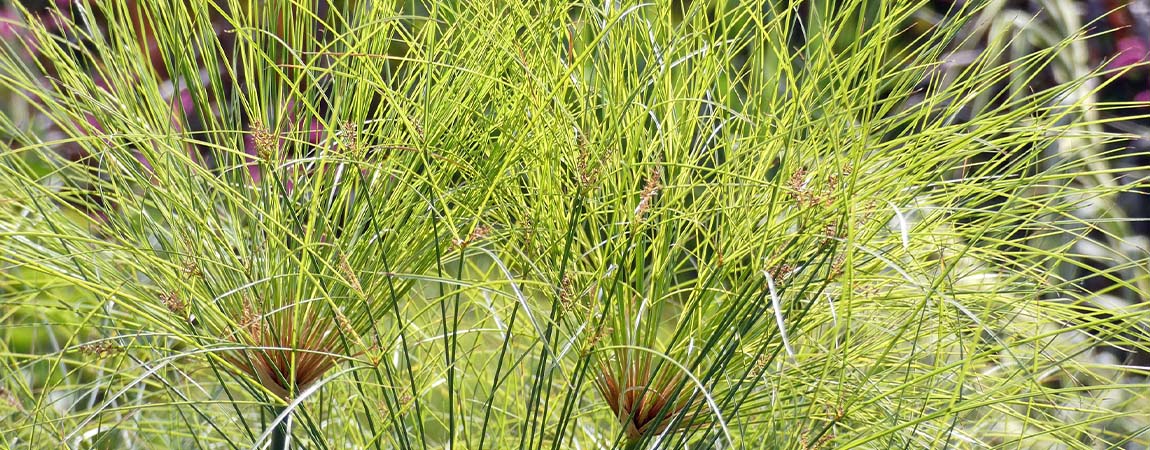
Throughout Europe, the legendary papyrus is present, spontaneously, only in two locations in Sicily: Syracuse and Fiumefreddo di Sicilia, a municipality in the province of Catania with just over 9000 inhabitants.
In these two areas the tangible memory of this extraordinary plant is preserved, which marked the course of history thousands of years ago. Historians debate the origins of papyrus on the island and it is still not clear whether it was imported or whether it spread naturally, taking advantage of the favorable environmental conditions.
From the papyrus the first card
The history of paper dates back to the beginning of human history, when the transfer of knowledge from one generation to another required the creation of a kind of storage medium that could be easily created, manipulated and stored for a long time without deteriorating.
The first of these paper-based storage media was undoubtedly papyrus parchment, an ancient material that was produced by Cyperus papyrus, aquatic plant with an appearance characterized by a thick crown and with leaves of a intense and bright green.
The origins of papyrus
Papyrus abounded in the regions of the Southern Sudan and of the delta of River Nile Egyptian and the civilizations that lived in that area managed to increase their ability to store information and news on art and religion thanks to the use of rolls produced with the ancient shrub.
Modern historians agree that the use of papyrus originated in the fourth millennium BC, when it was used extensively by the Egyptians not only for the creation of scrolls used for writing, but also as a material for making baskets, sandals, mats, mattresses , boats and even rope.
Due to its versatility, processing of the papyrus plant continued for millennia, managing to survive even as more competitive papermaking techniques appeared throughout Egypt and in the surrounding areas.
Papyrus in Sicily
Papyrus was used in ancient times by the Romans and in Europe in the distant Middle Ages. Suffice it to say that the traditional papal decrees, until the XNUMXth century, were written on papyrus rolls. The disappearance of the papyri fromEurope, From 'Africa and by 'Asia it was brought about by the advent of Arabic paper (originally created in China) during the mid-XNUMXth century.
According to many historians, papyrus was present in Sicily, in a presumably native form (on this point, as already mentioned, some historians and botanists disagree), since the XNUMXrd century BC. Over the centuries, the continuous reclamation works, implemented by the farmers of the island to have a greater quantity of arable land available, the habitat changed in favor of the growth of the plant and, progressively, to its disappearance.
The dwarf papyrus and Cyperus Papirus
The ancient presence of the plant in Sicily is beyond dispute, but papyrus is explicitly mentioned only rarely in Sicilian documents untilmodern era (post-medieval), when it is indicated with the Sicilian word papyrus (Italian papyrus). At the time, most of the paper consisted of cotton and other fibers. Yet, the Sicilia boasts the largest natural colony of papyri in Europe, which grows on the banks of the Ciane River (associated with several Greek myths) near Syracuse.
Today in the Sicilian gardens is widespread a “dwarf” papyrus of the same family as the sedge, and this may be the variety which grew in the Papiretus River (“Papyrus”) of Phoenician Palermo, whose course ran along the current Via Venezia. However, the Phoenicians may have introduced a true Egyptian papyrus (Cyperus Papyrus) into Sicily, and records indicate that it was present in Greek areas by 300 BC.
The plant grows best near fresh water, and the deforestation of much of Sicily, resulting in the replacement of actual rivers by seasonal streams, probably caused its general extinction.
What is certain is that in the local dialects the papyrus were known as “Pappera”, “Pampera” or “Parrucca” and was used for the production of cordage. From the eighteenth century onwards we have news of the use of the plant to produce paper.
The papyrus at Fiumefreddo in Sicily
In 1632, Antonino La Motta, documented the presence of the rare papyrus plant in the territory of Fiumefreddo in 1632. It is important to underline that other botanists, instead, found the papyrus in Syracuse several years later, in 1674.
In Fiumefreddo di Sicilia, you can visit an extraordinary and original museum entirely dedicated to papyrus. The establishment of museum is due to Michele Patané, passionate papyrologist since the 70s. At that time, together with other members of the local WWF headquarters, he began to work to have the area's nature reserve recognized, which was established in the following decade.
Patané began to approach the papyrus plant by chance, when a farmer gave him a gift of some plants uprooted from his land because they blocked a passage. Having received the unusual gift and having also recovered the bulbs of the plant, Michele Patané began to read up on the techniques used to make the precious sheets from acquaintances in Syracuse who knew the plant well.
The papyrus museum in Fiumefreddo
Having acquired the manual technique and without the use of machinery, he managed to create extraordinary works including a papyrus almost eight meters exhibited at the 2005 Expo representing the Municipality of Fiumefreddo di Sicilia.
Michele Patané's laboratory was inaugurated at the end of 1988 and since then it has become a real museum that welcomes numerous visitors every year, especially school groups fascinated by the production of papyrus sheets.
The founder, painter and artist, describes the processes of making parchments to visitors who can then touch the transformation of the plant into paper and admire the artist's paintings.









